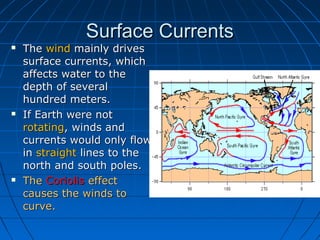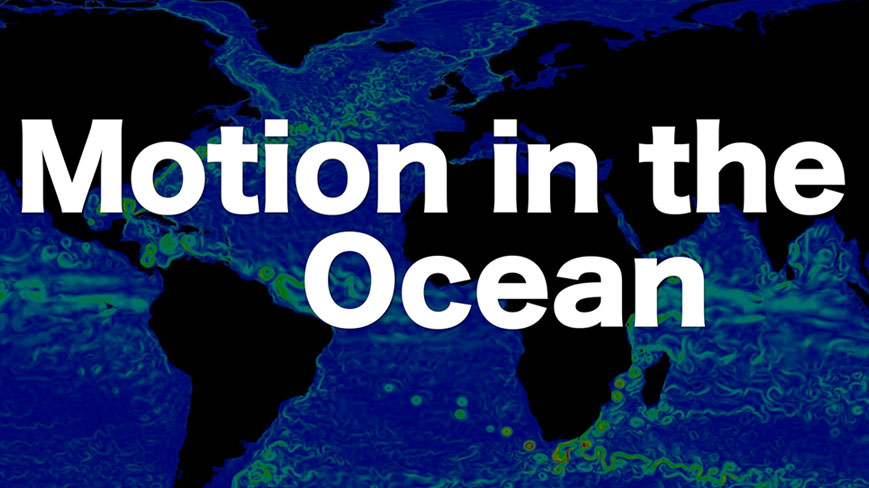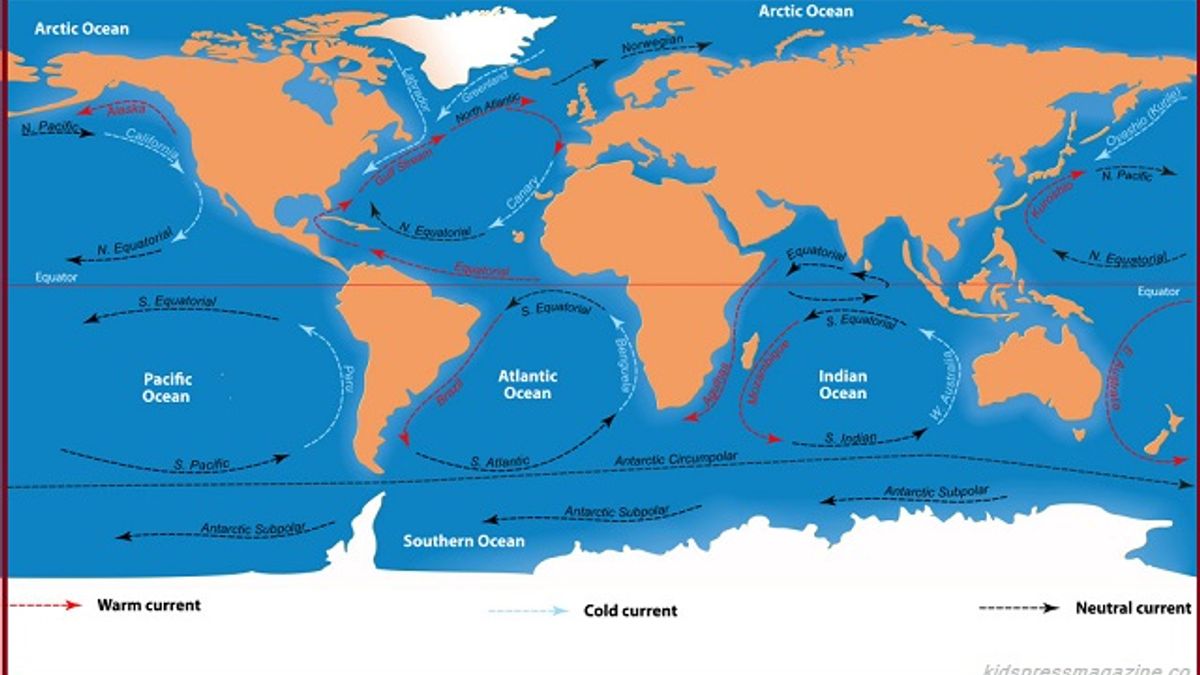Ocean currents are large systems of water that flow in defined patterns around the world's oceans. These currents play a vital role in the global climate, as they help to distribute heat around the planet and can have a significant impact on weather patterns. There are several different types of ocean currents, including surface currents, which flow near the top of the ocean, and deep water currents, which flow at greater depths.
One of the most well-known ocean currents is the Gulf Stream, which begins in the Gulf of Mexico and flows northward along the eastern coast of the United States before crossing the Atlantic Ocean. The Gulf Stream is a warm current that helps to moderate the climate in Europe, making it milder than it would be otherwise.
Another important ocean current is the Kuroshio Current, which flows from the Philippines towards Japan. This current is also warm and helps to keep the climate in Japan mild. The Agulhas Current is another significant current, flowing from the Indian Ocean towards the southern coast of Africa. This current is responsible for bringing warm, moist air to the region, which can lead to heavy rainfall.
There are several factors that can influence the movement of ocean currents. One of the most important is the temperature of the water, as warm water is less dense than cold water and therefore tends to rise to the surface. This can cause the formation of surface currents, such as the Gulf Stream and the Kuroshio Current.
The movement of ocean currents is also influenced by the Earth's rotation, which causes the currents to curve to the right in the Northern Hemisphere and to the left in the Southern Hemisphere. This is known as the Coriolis Effect.
In addition to their impact on climate and weather, ocean currents also play a crucial role in the global ecosystem. They help to distribute nutrients and support the growth of marine life, and they also affect the migration patterns of marine animals.
Overall, the movement of ocean currents is a complex and vital process that plays a significant role in the global climate and ecosystem. Understanding these currents and their movement is an important part of understanding the Earth's climate and predicting future weather patterns.







